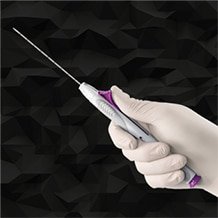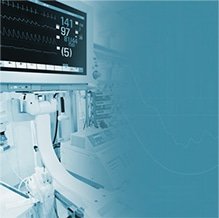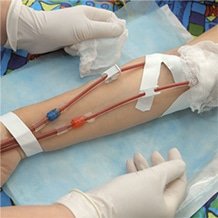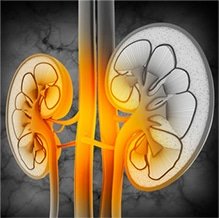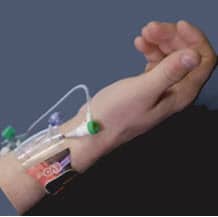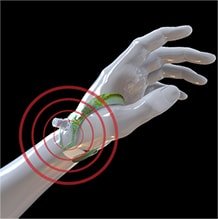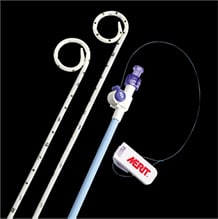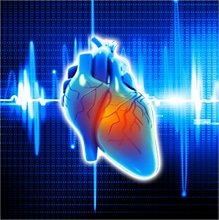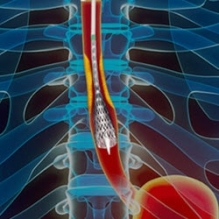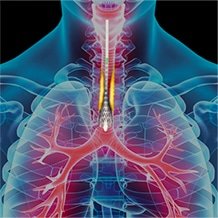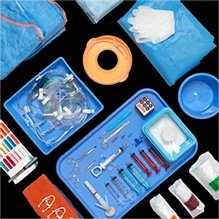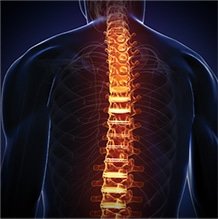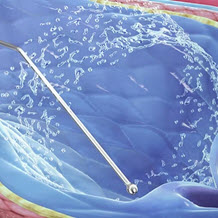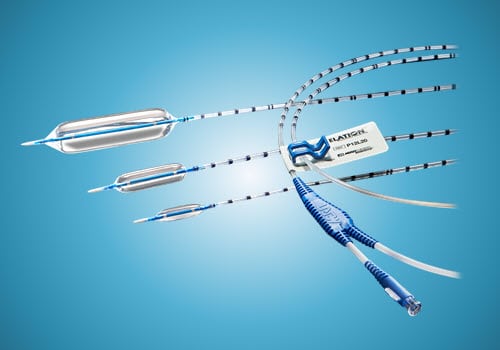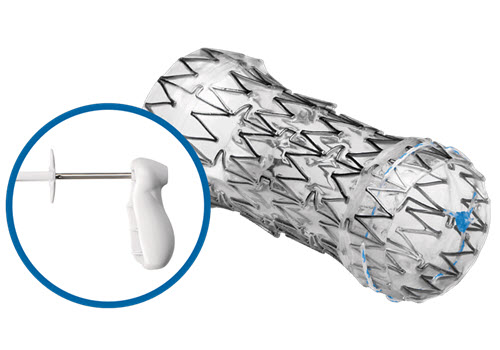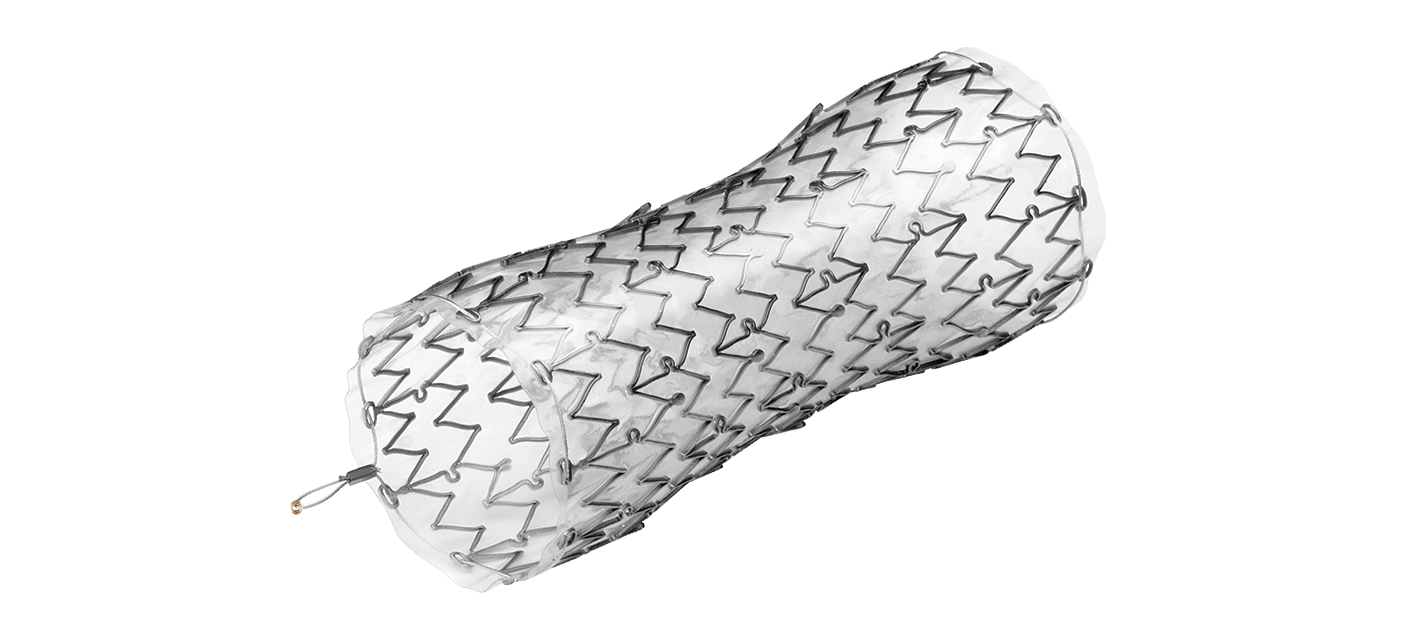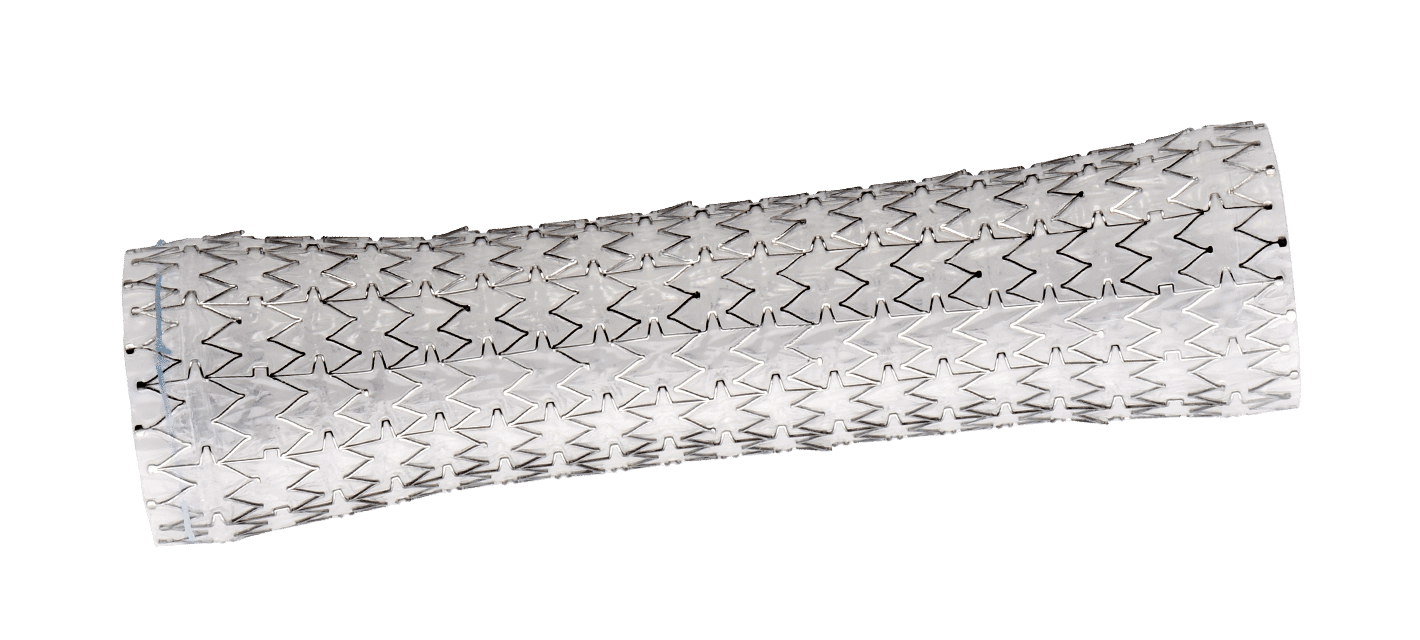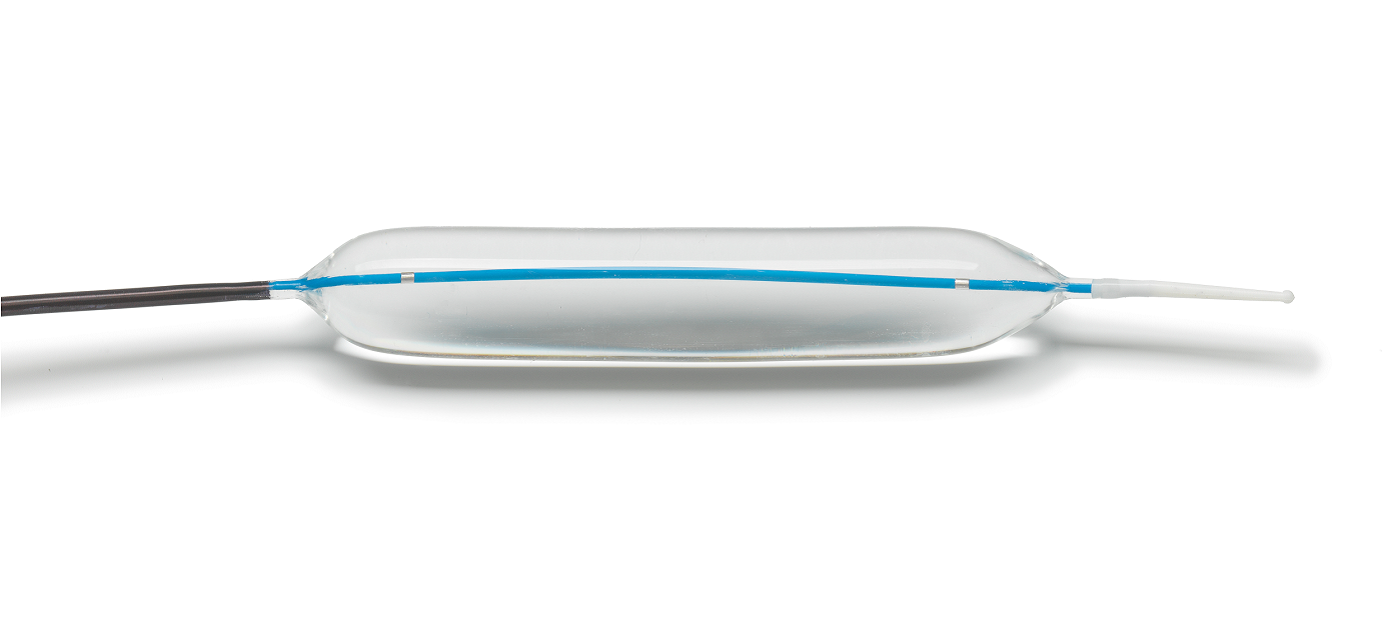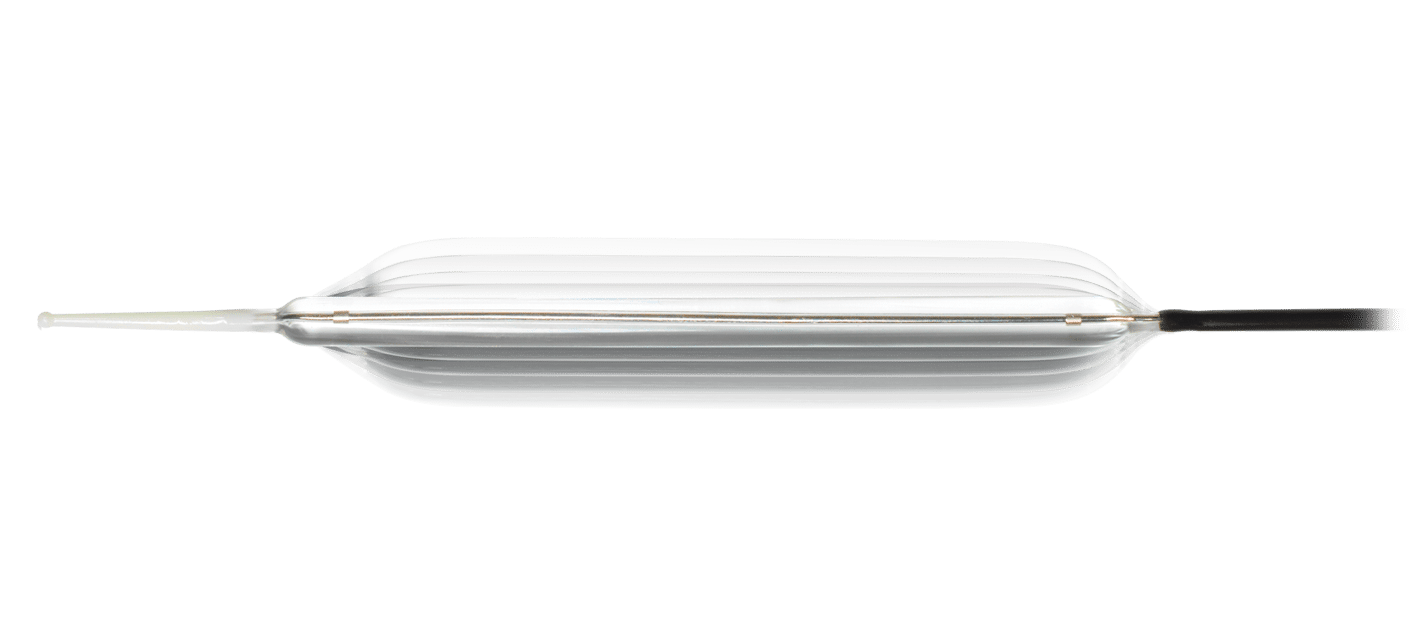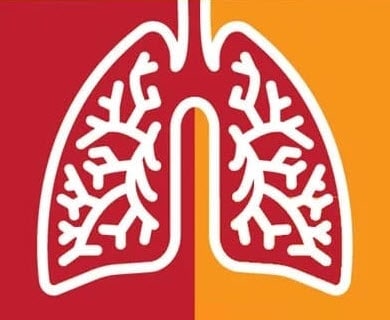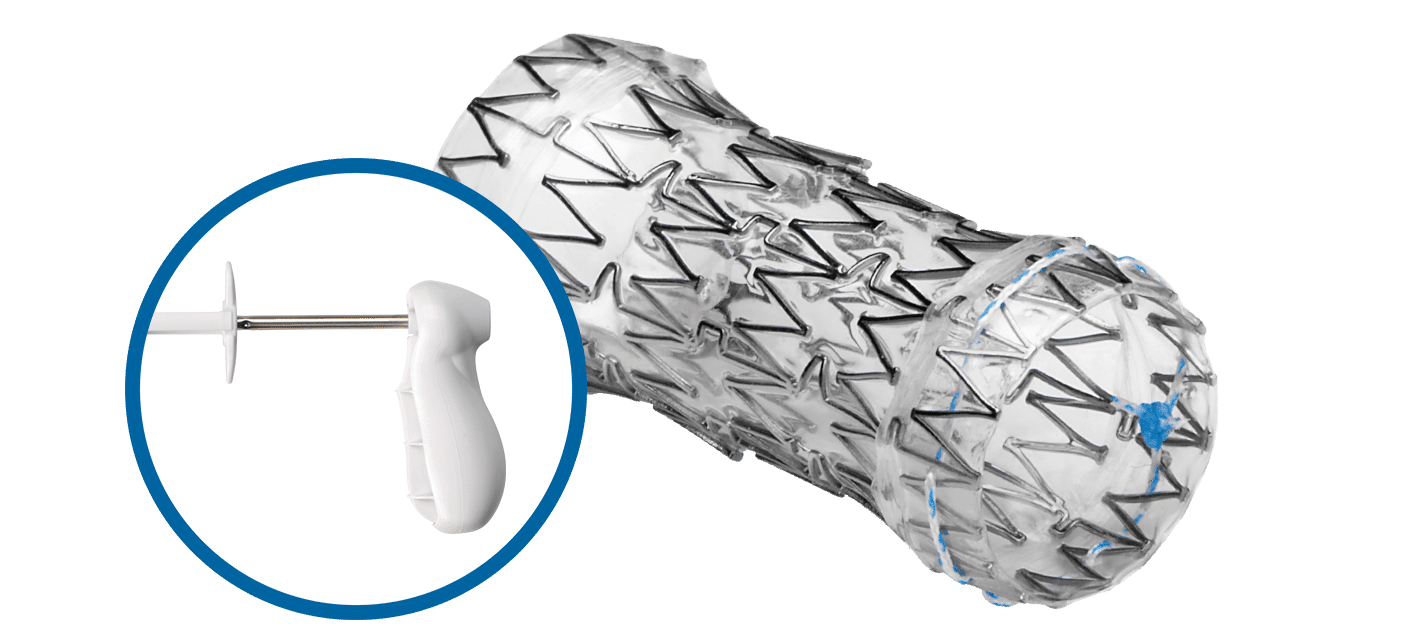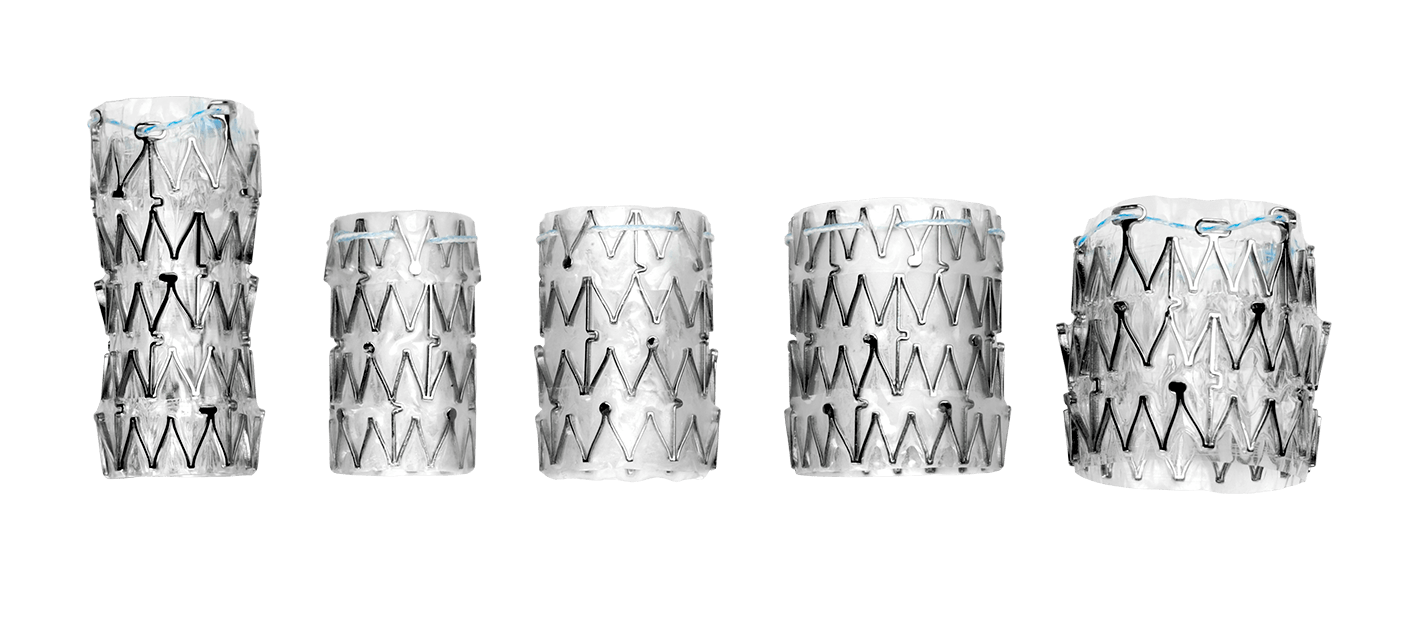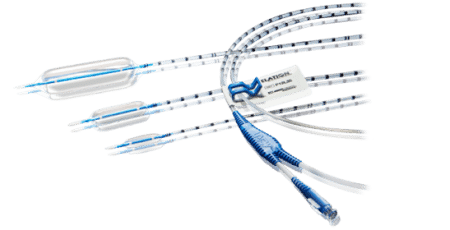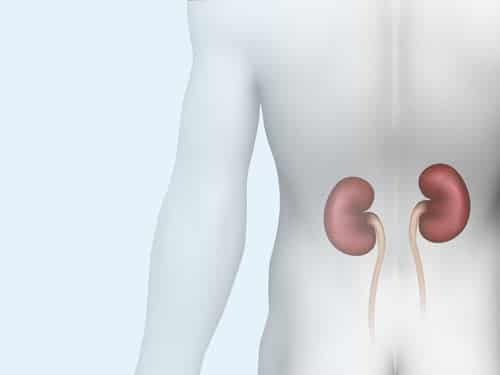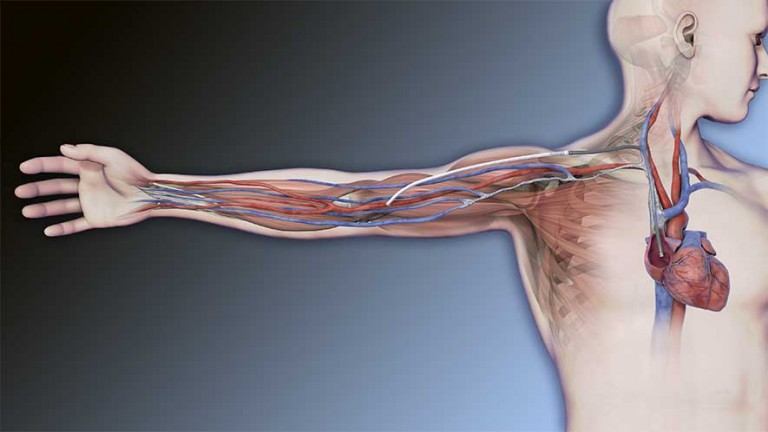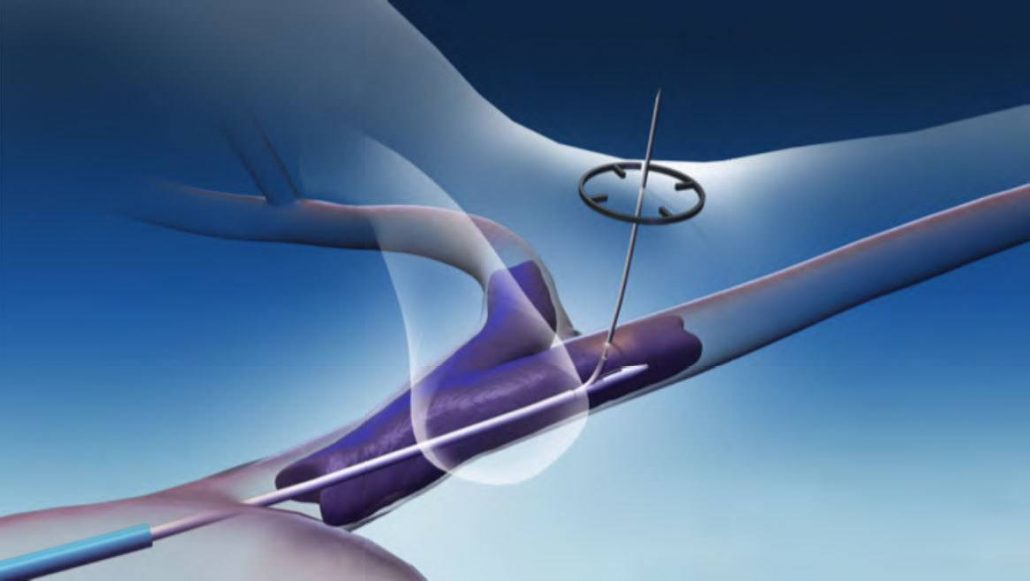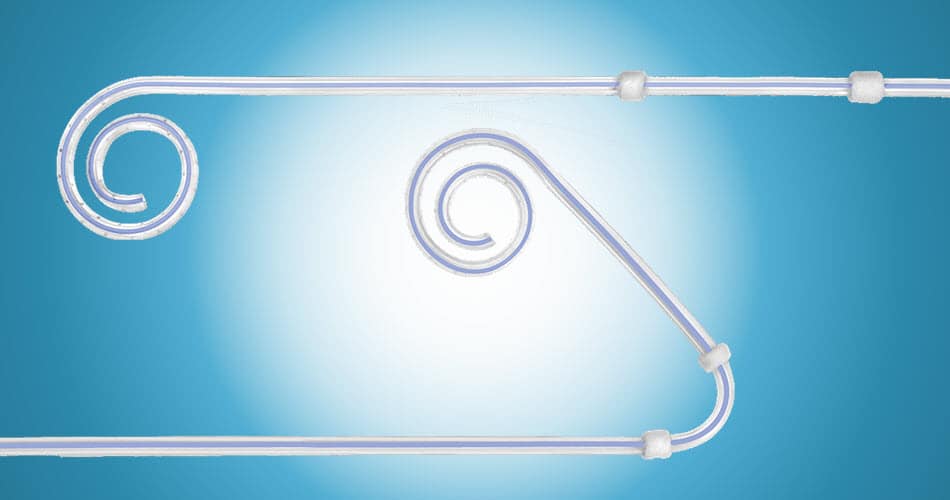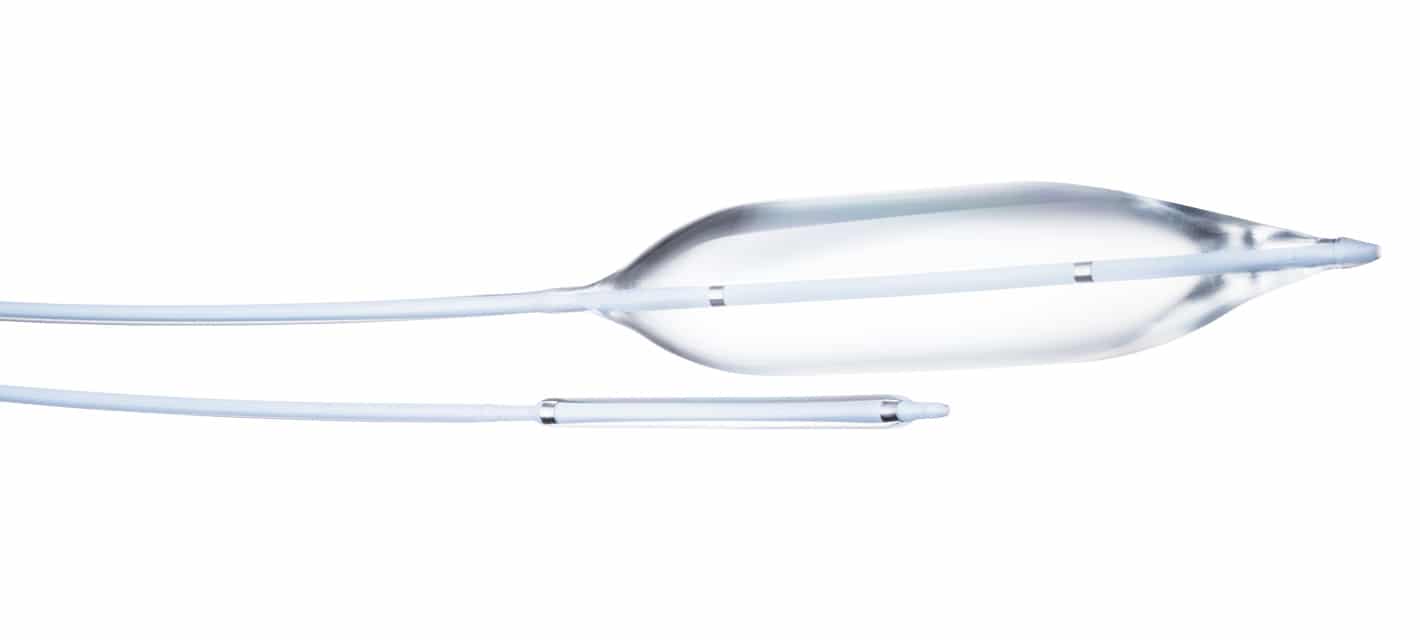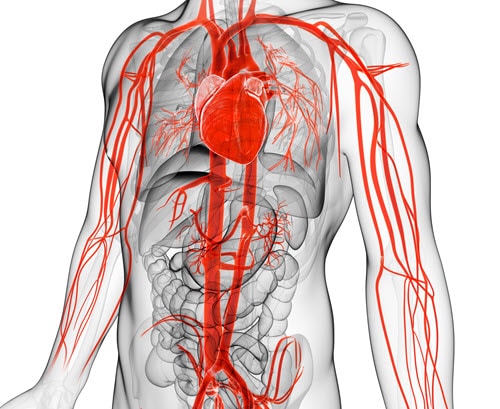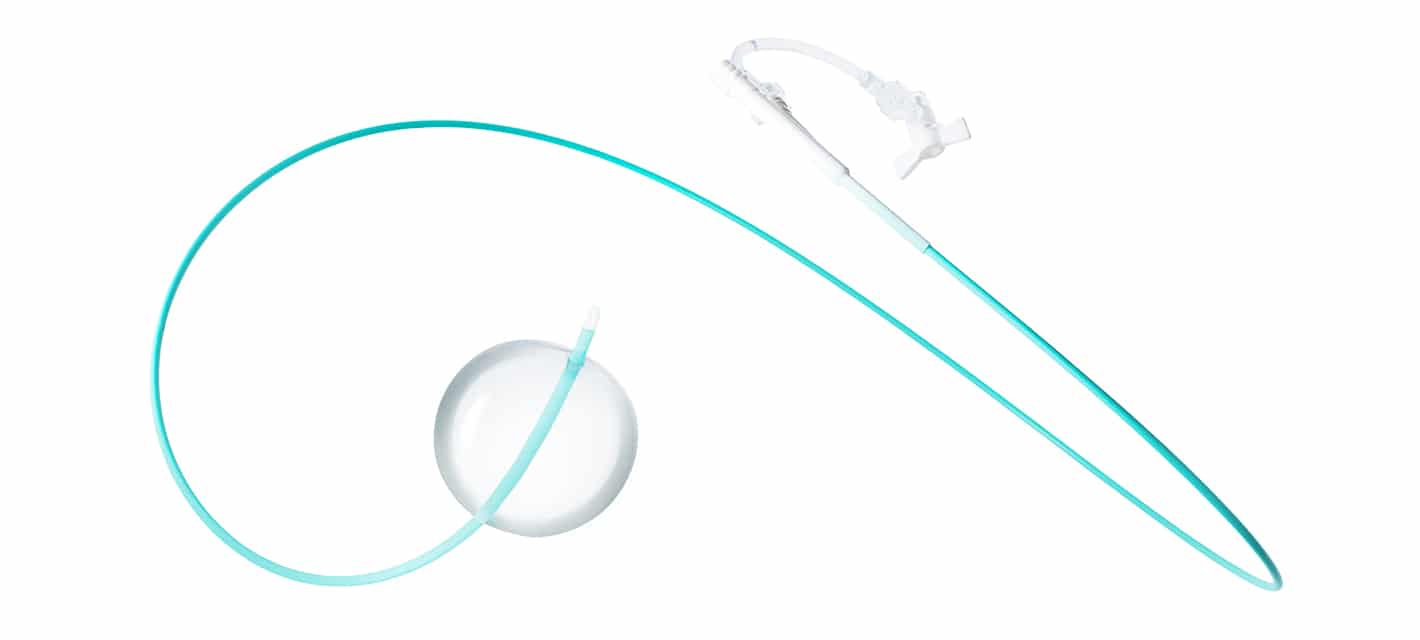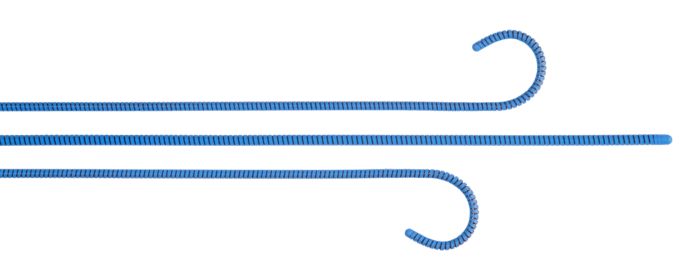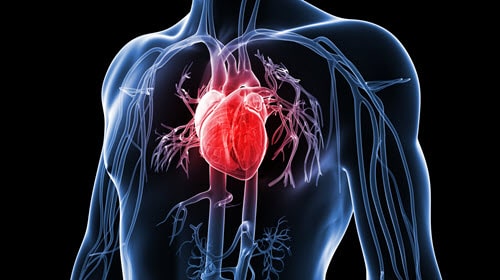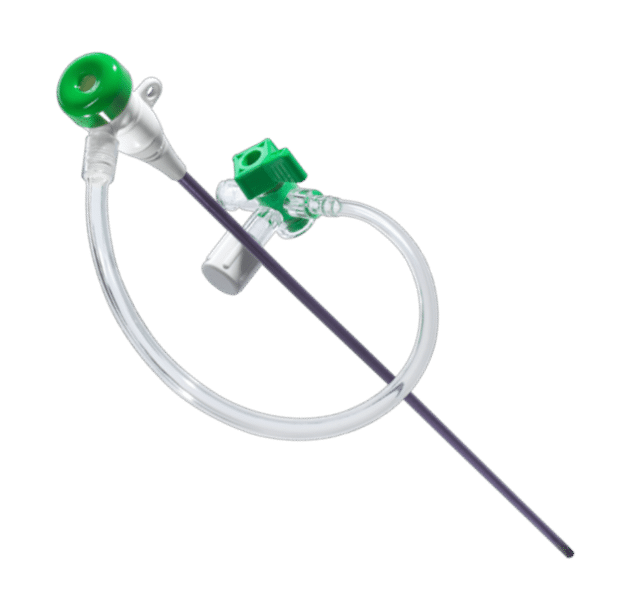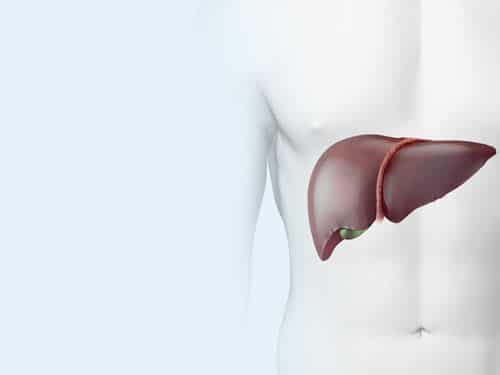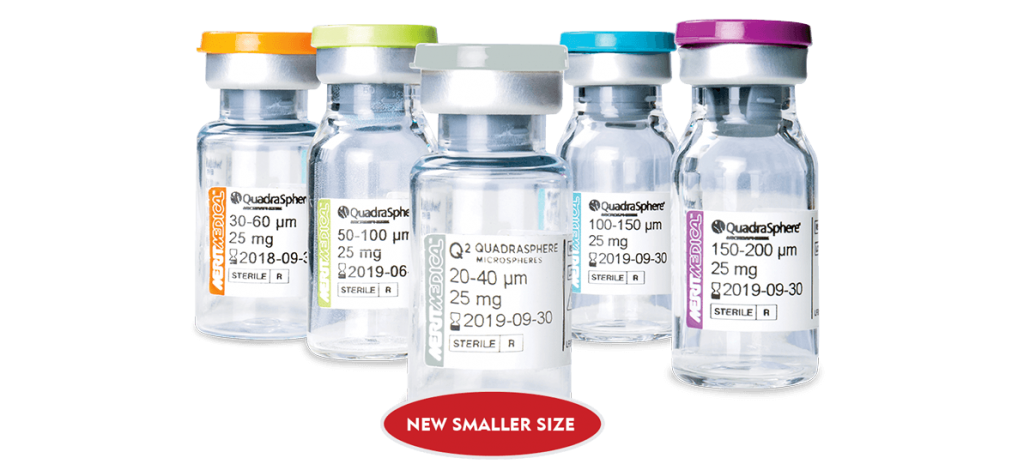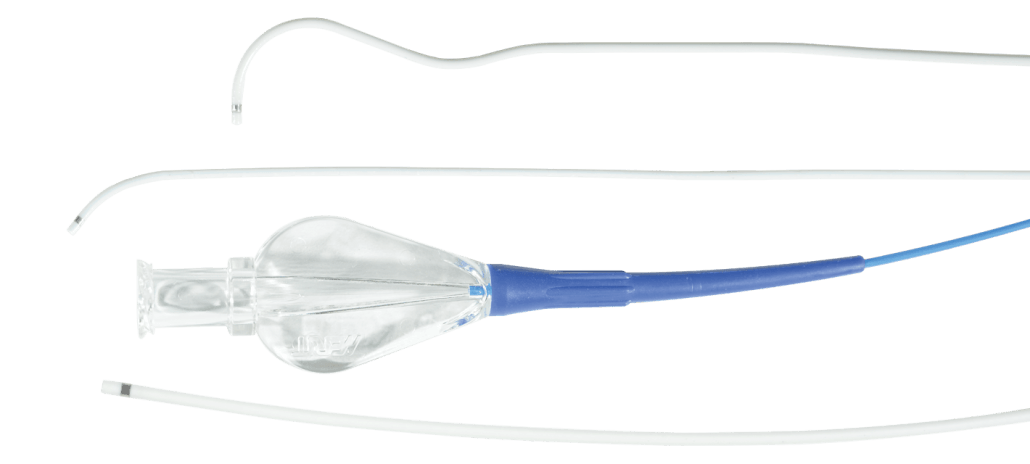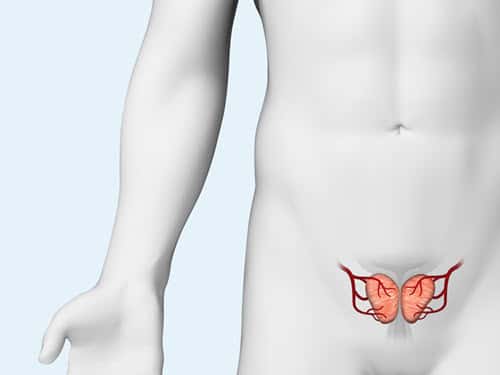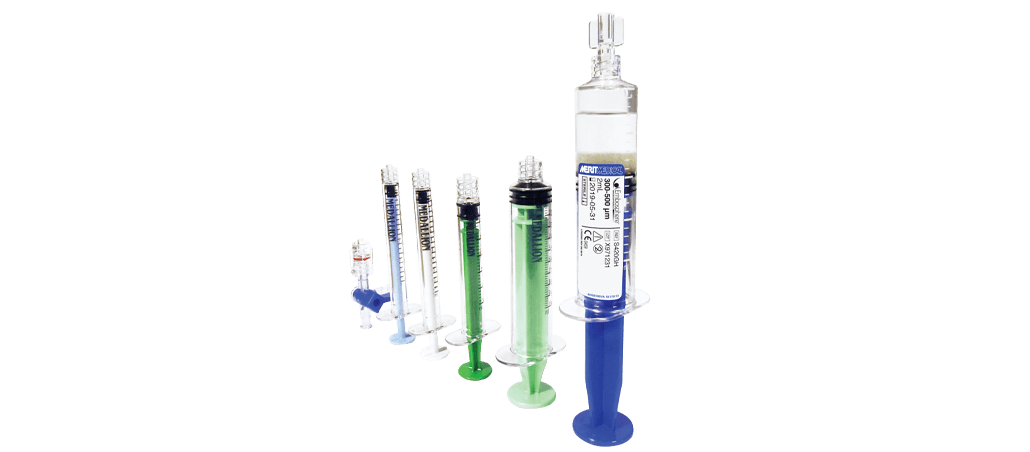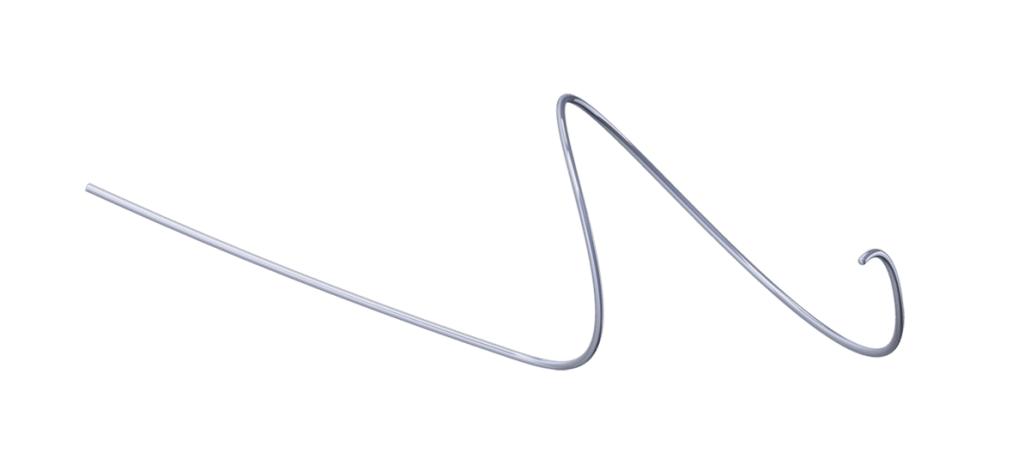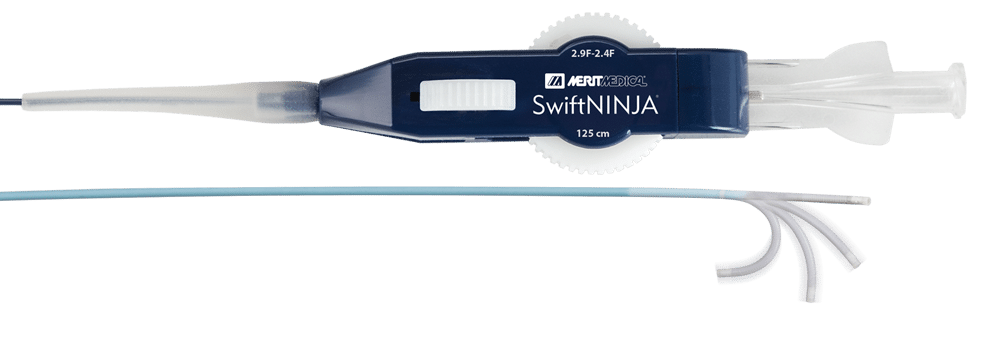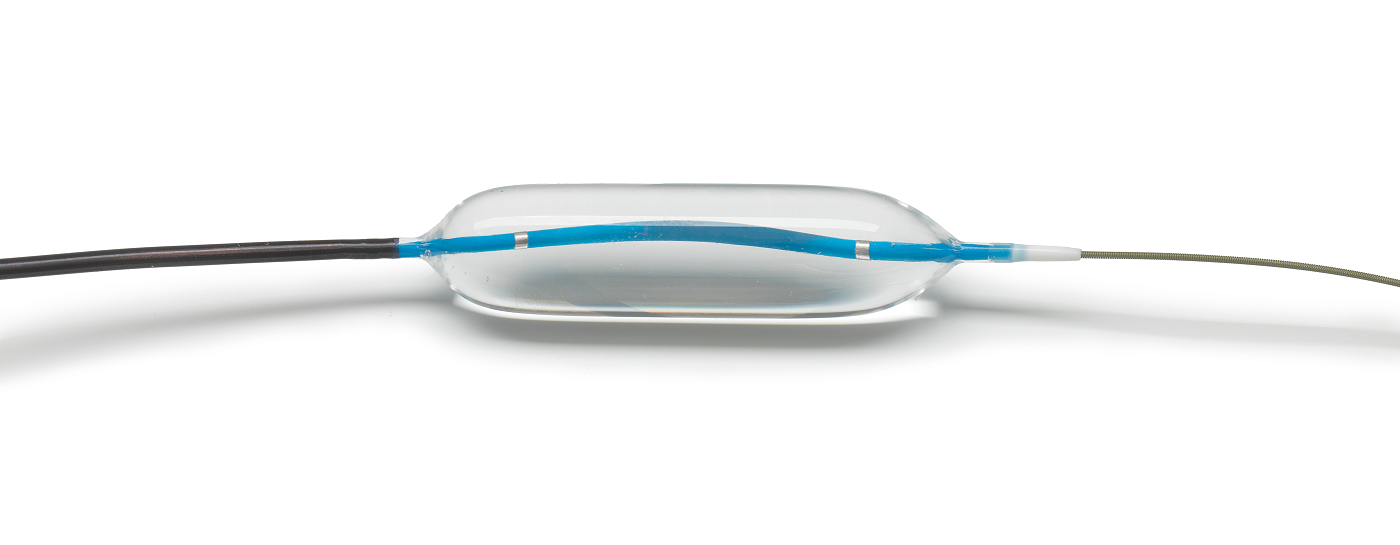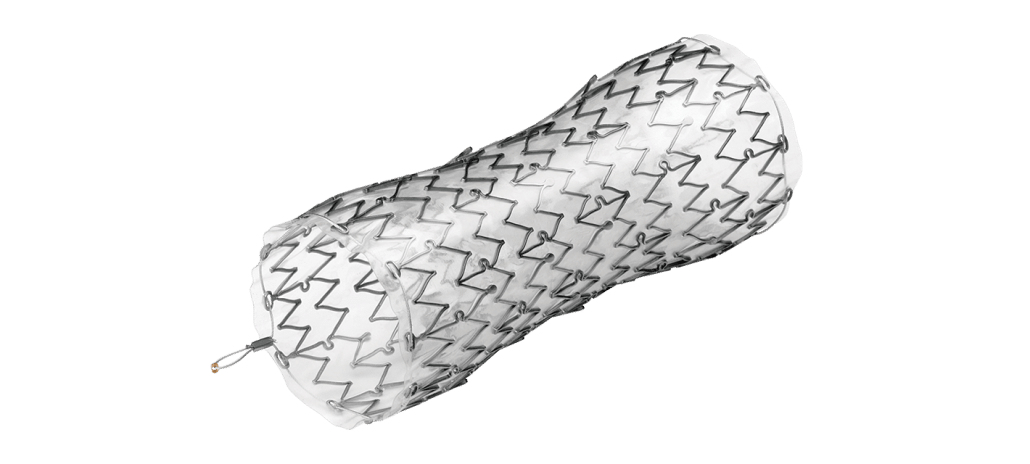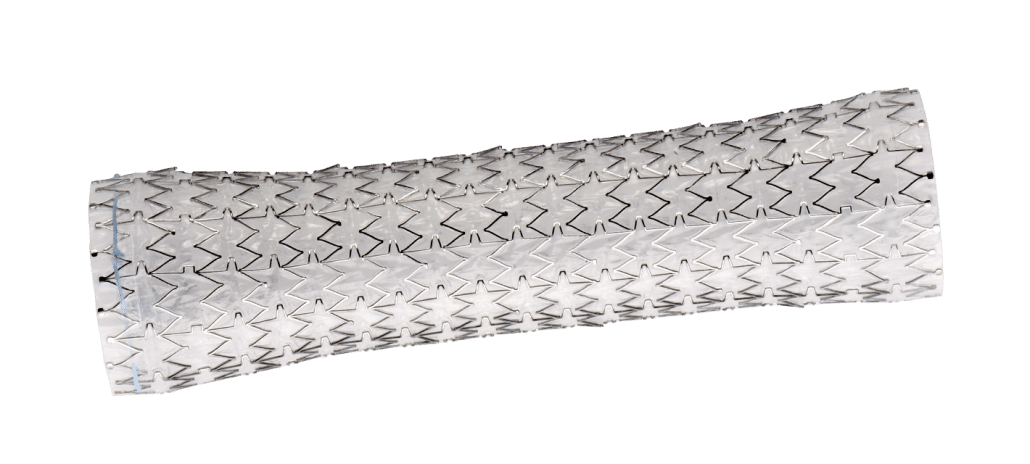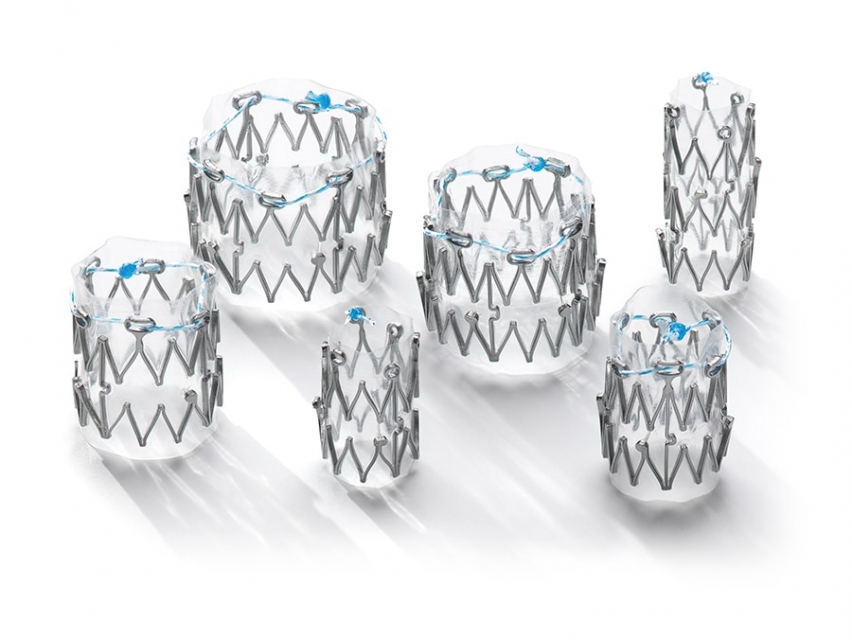What’s Your Clinical Challenge? We Have a Solution.
As a leader in customer-focused healthcare, Merit Medical’s priority is to ensure that you have the tools you need to care for your patients. Ranging from product kits to education opportunities, our Complete Solutions simplify preparation and streamline procedures to support quality patient care with a trusted, innovative range of medical devices.
CARDIAC CATHETERIZATION
Our cardiac catheterization solutions provide you with a variety of tools to help you accurately diagnose and successfully treat patients with heart problems. From sheath introducers, like our Prelude IDeal™, and guide wires to catheters, inflation devices, and more, we offer a number of superior devices for your procedures.
CRITICAL CARE
When treating vulnerable patients, every product you use matters. We offer a broad spectrum of tools designed for patients being treated in the critical care unit. Merit critical care technologies aim to reduce contaminant exposure, accurately monitor patient blood pressure, and decrease workplace injury, helping you provide treatment that is safe, effective, and efficient.
DIALYSIS ACCESS
Kidney disease is a global issue, and access is the foundation for any successful dialysis procedure. Our comprehensive dialysis access portfolio, including our catheter-dependence reducing HeRO® Graft, brings reliable and innovative solutions to your practice.
PERITONEAL DIALYSIS
Our home dialysis options offer several patient advantages over in-center dialysis, including better kidney disease-related quality of life. We offer virtual and hands-on physician training, a wide range of catheter sizes, accessories, kits, and patient resources.
RADIAL
Radial access has many well-documented benefits that include improved patient safety, a significant reduction in cost of care, and increased patient and staff satisfaction. We support radial access with a diverse portfolio of innovative products and a world-renowned hands-on physician education program, helping you offer the advantages of radial to your patients.
DISTAL RADIAL ACCESS
Distal radial artery access offers both patient and operator advantages. To help bring these benefits to your practice, we provide advanced training on the distal technique as well as innovative products to support your procedures, such as the first-to-market PreludeSYNC DISTAL™ Radial Compression Device.
DRAINAGE
Over the past two decades, we have continually expanded our drainage portfolio to include a diverse range of solutions that work together to help you achieve optimal drainage care. We offer multiple drainage catheters designed to lessen trauma and promote a more accurate placement.
ELECTROPHYSIOLOGY & CRM
Successful diagnosis and treatment of electrical cardiac activity is crucial—this is why we offer a range of physician education courses and specialized tools to assist in making accurate diagnoses and create effective treatment plans. Features include extra-stiff transseptal needles, ergonomic handles for exceptional control, and advanced introducer systems.
EMBOLOTHERAPY
Our proprietary embolic products are the most studied on the market and allow for efficient and safe delivery and predictable outcomes. To complement our offerings, we provide excellent ongoing customer service to ensure you have the tools you need for your procedures.

To help support your prostatic artery embolization (PAE) practice, we offer virtual and hands-on training, trusted products, clinical resources, patient materials, and more.
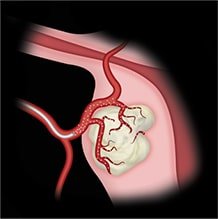
Our uterine fibroid embolization (UFE) solutions offer trusted products that deliver predictable clinical results as well as long-term symptom control.
We also offer extensive patient resources at our Ask4PAE and Ask4UFE sites.
GASTROENTEROLOGY STRICTURE MANAGEMENT
Merit Endoscopy’s fully covered, laser-cut esophageal stent technology provides for accurate placement and minimized migration. In addition to our state-of-the-art stent technology, we deliver best-in-class dilation products, including our BIG60® Inflation Device and our Elation dilation balloons as well as enhanced physician training.
PULMONARY STRICTURE MANAGEMENT
For patients with tracheobronchial strictures, stent technology can provide rapid palliation and improve quality of life. We offer fully covered, laser-cut tracheobronchial stents and advanced over-the-wire and direct visualization delivery systems. Download case studies and participate in virtual and hands-on training—all designed to help you advance patient care.
KITS & PACKS
Designed to bring convenience and efficiency to your office, our kits and packs solutions can help simplify prep and procedure, support quality patient care, and reduce inventory levels. Our team analyzed hundreds of kits and created a set of standard configurations that meet the needs of the majority of cath labs, interventional radiology, and vascular surgery departments. We also offer customizable kits to fit your unique procedural needs.
SPINE
Through a diverse portfolio of sophisticated steerable technologies, we deliver complete procedural solutions designed to treat pathologies of the vertebrae, reduce pain, and improve patient quality of life. Our comprehensive education programs and unique products allow physicians to address patient-specific needs and physician preference in the treatment of vertebral pathologies.
VENOUS
Our minimally invasive venous solutions are designed to treat symptoms, minimize post-operative pain, and provide faster recovery. Explore products, accessories, and kits, packs, and trays—each complementing the next to provide you with better patient outcomes.
Merit’s dedication to comprehensive customer care starts with providing the tools you need to treat your patients. Ready to get started? Available via email, phone, and live chat, our Customer Support team is here to help find a solution for you. Browse our virtual in-service and product support videos, all designed to help you obtain additional product knowledge and insights. We look forward to working with you.
Let’s Talk Lung Cancer: An In-Depth Interview with Dr. Reddy
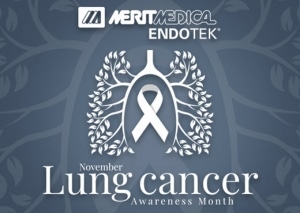
Lung cancer is the leading cause of cancer deaths worldwide.1 In the United States, more people die from lung cancer than any other type of cancer.2 November is Lung Cancer Awareness Month, and to help us gain a better understanding of the condition, the screening process, and treatment options, we sat down with Chakravarthy Reddy, MD, pulmonologist at the University of Utah Huntsman Cancer Institute in Salt Lake City, UT.
What Is Lung Cancer?
Lung cancer occurs when cells in the lungs change or mutate, resulting in abnormal cell growth. These cells multiply uncontrollably, forming a tumor and spreading to other parts of the body.
“Stage one or stage two, where patients are potentially curable, have almost no symptoms at all; it’s always incidentally found,” Dr. Reddy explains. “A patient has a scan for some other reason, and the cancer is detected in the lungs.”
When lung cancer symptoms do manifest, they can include a cough that worsens or does not resolve, chest pain, shortness of breath, coughing up blood, wheezing, weakness or fatigue, and weight loss.4 “Unfortunately, by the time a patient presents with symptoms, they’re in advanced stages, and their survival is not as good,” says Dr. Reddy.
What Are Risk Factors for Lung Cancer?
Smoking is by far the leading cause of lung cancer, putting people who smoke at a significantly higher risk of developing lung cancer compared to non-smokers.5
In addition to smoking, breathing secondhand smoke is also dangerous, increasing the risk of lung cancer.6 “We always talk about smokers, but there is a correlation between people who live with smokers and their risk for developing lung cancer,” Dr. Reddy adds. “Secondhand exposure does increase the risk of developing cancer.”
The American Cancer Society lists other risk factors for lung cancer, which include:5

Radon
A naturally occurring radioactive gas, radon is the breakdown of uranium in soil and rocks. Potential risk areas are homes with basements.
Asbestos
Asbestos is a mineral fiber that occurs in rock and soil.7 People who work with asbestos (e.g., in mines, mills, textile plants, shipyards, and where insulation is used) are several times more likely to die of lung cancer.
Carcinogens
Exposure to cancer-causing agents, such as uranium, arsenic, beryllium, cadmium, nickel compounds, coal products, and diesel exhaust can increase lung cancer risk.
Personal or Family History
If an individual has lung cancer, there is a higher risk of developing another lung cancer. Brothers, sisters, and children of people who have had lung cancer may have a higher risk.
Previous Radiation Therapy to the Lungs
People who have had radiation therapy to the chest for other cancers are at a higher risk of lung cancer, particularly if they smoke.
Air Pollution
In cities, air pollution can increase the risk of lung cancer, with some research suggesting approximately 5% of all deaths from lung cancer may be due to outdoor air pollution.
Who Should Be Screened for Lung Cancer?
The recommended screening test for lung cancer is a low-dose CT scan.8 According to the United States Preventive Services Task Force, those eligible for screening must meet the three-pronged criteria:9
Age ǀ Adults aged 50-80 years
Smoking History ǀ Individuals with a 20 pack-year smoking history
Tobacco Exposure ǀ Current smokers or those who have quit within the past 15 years
Age is a straightforward benchmark, but calculating a pack-year may seem foreign to most. “Multiply the number of packs of cigarettes you smoke per day by the number of years you’ve smoked. This gives you the value, which we call pack-years,” Dr. Reddy explains. An example would be if a person has smoked a pack of cigarettes for 20 years or two packs for 10 years, each of these instances would calculate a 20 pack-year history.
The third criterion addresses tobacco exposure—but what is the significance of a 15-year time span? “It takes about 15 years for the risk [of lung cancer] to normalize,” Dr. Reddy says. “If it’s been less than 15 years since the patient quit, then the third criterion for lung cancer screening is met.”
This also means if a patient does not meet the criteria, screening will not happen. Dr. Reddy encourages people who are under 50 who have a 20 pack-year history to speak with a physician about any concerns, personal risk factors, and the benefits of being screened.
What Lung Cancer Treatment Options Are Available?
When lung cancer is caught early, there are more curative options. Unfortunately, as Dr. Reddy mentioned, lung cancer is normally caught in late stages. A surgery called a lobectomy, which removes one of the lobes in the lung, is only an option for stage 1 or 2 cancer. “Patients who come in with lung cancer don’t have healthy lungs to begin with,” Dr. Reddy says. “It’s more likely they also have emphysema from smoking, and they probably won’t tolerate removal of even a lobe.”
If a patient’s lung function is borderline, Dr. Reddy suggests another surgical option called a wedge resection, where the lobe is spared, and only the cancer is removed. “It’s not preferred, but if that’s the only option, it’s better than not doing anything,” Dr. Reddy says. “If their lung function is any worse than that, then we clearly cannot do any surgery at all. We have to think of second-line approaches, such as radiation therapy.”
According to Dr. Reddy, lung cancer that spreads first to the lymph nodes in the chest is still potentially curable. However, once it leaves the chest and invades the chest cavity and other parts of the body, such as the adrenal glands, the brain, or bones, it is potentially no longer curable. When this occurs, palliative care is the only option, relieving symptoms and mitigating suffering while optimizing patient quality of life.
To relieve common lung cancer symptoms, such as shortness of breath or a persistent cough, there are options. “One of the things we do is use balloons to dilate [the airway passages],” Dr. Reddy explains. “Merit makes Elation® balloons, which we find extremely useful, especially because they are available in short, two-centimeter balloon configurations.”
A second approach is to stent the tumor in the lung to maintain the patency of the airway. An option for this line of treatment would be Merit’s AERO® Tracheobronchial Stents. “Patients notice an improvement immediately, almost right after they wake up from the procedure,” Dr. Reddy says. “The radial force of the AERO stent actually keeps the airway open, and that improves shortness of breath.”
Lung Cancer Awareness Resources
As lung cancer awareness is heightened this month, it is critical to share facts about the importance of screening with loved ones and encourage those who smoke to quit.
Knowledge is power, and having health resources to help understand lung cancer better is important. In addition to information about the disease, the below organizations provide a wide range of topics, including survivor stories and ways to get involved throughout the month, helping patients and families in their battle against lung cancer:
Lung Cancer Foundation of America
American Lung Association
GO2 Foundation for Lung Cancer
Support for Merit Employees
If you smoke and need help quitting, sign up for our Employee Smoking Cessation program. Contact Dr. Priest for more information.
Merit Medical is dedicated to improving the lives of people, families, and communities worldwide. Learn more about the trusted interventional and palliative treatment options we offer to help physicians care for lung cancer patients.
References:
- World Health Organization. 2021. “Cancer Key Facts.” https://www.who.int/news-room/fact-sheets/detail/cancer
- Centers for Disease Control and Prevention. 2021. “Lung Cancer Statistics.” https://www.cdc.gov/cancer/lung/statistics/
- American Lung Association. 2021. “Lung Cancer Basics.” https://www.lung.org/lung-health-diseases/lung-disease-lookup/lung-cancer/basics
- Centers for Disease Control and Prevention. 2021. “What Are the Symptoms of Lung Cancer?” https://www.cdc.gov/cancer/lung/basic_info/symptoms.htm
- American Cancer Society. 2019. “Lung Cancer Risk Factors.” https://www.cancer.org/cancer/lung-cancer/causes-risks-prevention/risk-factors.html
- Centers for Disease Control and Prevention. 2021. “Health Effects of Secondhand Smoke.” https://www.cdc.gov/tobacco/data_statistics/fact_sheets/secondhand_smoke/health_effects/index.htm
- United States Environmental Protection Agency. n.d. “Learn About Asbestos.” https://www.epa.gov/asbestos/learn-about-asbestos
- Centers for Disease Control and Prevention. 2021. “Who Should Be Screened for Lung Cancer?” https://www.cdc.gov/cancer/lung/basic_info/screening.htm
- United States Preventive Task Force. 2021. “Lung Cancer: Screening.” https://www.uspreventiveservicestaskforce.org/uspstf/recommendation/lung-cancer-screening
Merit Brings Awareness to Men’s Health During the Month of June

At Merit Medical, it’s our goal to not only provide the tools physicians need to treat and improve patient outcomes but also share knowledge and increase awareness surrounding risk factors for disease.
We understand that illness affects both men and women, but to offer the best patient care, it’s also important to shed light on diseases that are more prevalent in one sex versus the other.
Here are just some of the illnesses that are seen more frequently among men—and how we help care for each.
ESOPHAGEAL CANCER
Esophageal cancer is cancer found in the esophagus—the hollow, muscular tube in your body that carries food and liquid from the throat to the stomach. Men are around three times more likely than women to have esophageal cancer.
- Avoid alcohol.
- Eat more fruits and vegetables.
- Maintain a healthy weight.
- Exercise regularly.
Learn more about esophageal cancer.
MERIT PRODUCTS
LUNG CANCER
Lung cancer is a type of cancer that begins in the lungs. It is the leading cause of cancer deaths worldwide. The overall chance of a man developing lung cancer in his lifetime is approximately 1 in 15, whereas for a woman, the risk is about 1 in 17.
- Quit smoking (or don’t start).
- Stay away from secondhand smoke.
- Test your home for radon.
- Avoid cancer-causing chemicals.
- Live a healthy lifestyle.
MERIT PRODUCTS
KIDNEY FAILURE
Although more women than men are diagnosed with chronic kidney disease, or CKD, men are more likely to reach kidney failure sooner.
Although kidney failure can happen to anyone, men may be more at risk compared to women due to differences in hormones and living unhealthier lifestyles.
- Get a kidney check-up at least every year.
- Control your blood pressure and blood sugar.
- Stop smoking (or don’t start).
- Exercise and eat a healthy diet.
- Maintain a healthy weight.
- If you have an enlarged prostate, talk with your doctor to make sure it’s not blocking your urinary tract.
- Give your doctor a list of any supplements, medicines, and/or hormone treatments you’re taking to ensure they aren’t damaging your kidneys.
Learn more about kidney failure and visit our Dialysis Access Solution page.
MERIT PRODUCTS
AORTIC ANEURYSM
The aorta runs from the heart through the center of the chest and abdomen. It’s the main blood vessel that brings blood to the abdomen, pelvis, and legs. An abdominal aortic aneurysm (AAA) is a life-threatening condition that occurs when the vessel enlarges, putting it at risk of bursting. Men are 4-15 times more likely to develop an AAA than women
- Stop smoking (or don’t start).
- Reduce stress.
- Exercise and eat a heart-healthy diet.
- If you have diabetes or high blood pressure, take the medicines your doctor has prescribed.
Learn more about AAA. To learn more about our packs, wires, and other cardiac products, please visit our Merit Vascular page.
MERIT PRODUCTS
HEART ATTACK
A heart attack, also known as a myocardial infarction, occurs when heart muscle doesn’t receive enough blood. As time passes without receiving treatment, the more damage is done to the heart. The main cause of a heart attack is coronary artery disease (CAD). Researchers have found that throughout life, men are about twice as likely as women to have a heart attack.
- Eat a healthy diet.
- Maintain a healthy weight.
- Exercise regularly.
- Stop smoking (or don’t start).
- Monitor your cholesterol and blood pressure.
- Manage your diabetes.
- Take your prescribed medicines.
Learn more about heart attacks. Explore our Cardiac Portfolio, including our radial sheaths, catheters, wires, and compression devices.
MERIT PRODUCTS
LIVER CANCER
Hepatocellular carcinoma (HCC) is the most common type of primary liver cancer and is most often seen in people with chronic liver diseases, such as cirrhosis caused by hepatitis B or hepatitis C. Worldwide, HCC is the fourth leading cause of cancer death and is 3 times more common among males than females.
- Avoid heavy alcohol use.
- Reduce exposure to aflatoxin B1.
- Stop smoking (or don’t start).
- Get the hepatitis B vaccine.
- If you have hepatitis, work with your care provider to receive treatment.
Learn more about liver cancer. Visit our Hepatic Oncology portfolio.
MERIT PRODUCTS
BENIGN PROSTATIC HYPERPLASIA (BPH)
Benign prostatic hyperplasia, or BPH, is the enlargement of the prostate gland and affects only men. It becomes more common as men get older. Up to 90% of men over the age of 80 have BPH. Although BPH is noncancerous, it can cause bothersome lower urinary tract symptoms.
- Maintain a heart-healthy diet.
- Avoid heavy alcohol use.
- Exercise regularly.
Explore the products we offer to support prostatic artery embolization (PAE), a minimally invasive option to treat BPH.
MERIT PRODUCTS
At Merit Medical, our goal is to improve the lives of people, families, and communities worldwide. An important part of this is caring for men’s health by providing the products and therapies needed for patients to live at their best.
Have questions? Reach out to our Customer Support team.
Before using, refer to Instructions for Use for indications, contraindications, warnings, precautions, and directions for use.
Merit Medical Endotek® Launches New Elation5™ Balloon Dilator
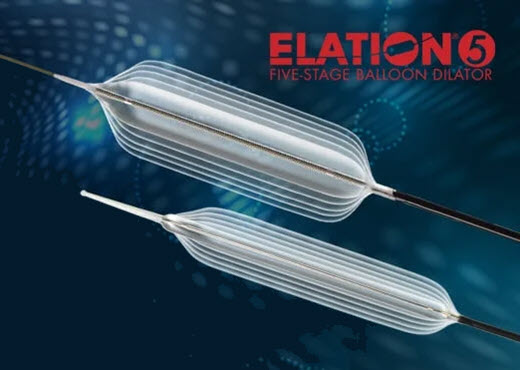
Several key features set Elation5 apart from its 3-stage counterparts. Elation5 has an additional specified diameter on both sides of the standard range of other multi-stage balloons and is available in unique sizes ranging from 5 mm to 21 mm in diameter. The added diameter range of each Elation5 balloon catheter increases clinical utility by reducing the occurrence of using multiple balloons to achieve effective dilation, thus reducing cost and improving efficiency. Like Merit’s flagship Elation® 3-Stage Balloons, Elation5 offers crystal clear endoscopic visualization, quick and complete deflation, a kink-resistant catheter that facilitates multiple scope reinsertions, and a novel catheter securement clip.
KEY FEATURES
Broadest Diameter Range on a Single Catheter – Improves clinical efficiency and reduces cost while simplifying inventory management by stocking fewer SKUs.
Unique 5-mm and 21-mm Balloon Diameters – Expands clinical utility in challenging cases.
Precise, Repeatable Inflation Accuracy – Elation5 Balloons are rigorously tested to ensure optimal performance.
Crystal Clear Endoscopic Visualization – Squared proximal balloon shoulders provide improved optical coupling.
Quick and Complete Deflation – Incomplete deflation can result in wasted time and expense. Paired with Merit’s BIG60® Inflation Device, physicians can count on a best-in-class dilation system.
First and only 5-stage balloons on the market


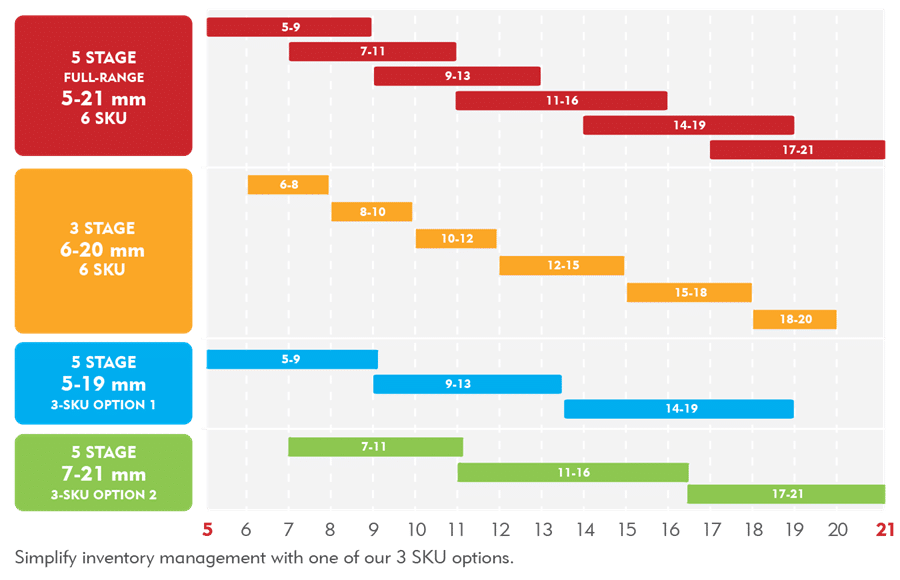
Simplify inventory management while saving money and enhancing clinical efficiency
Broad diameter range and unique diameter sizes increase clinical efficiency, reduce costs, and enhance clinical utility.

Elation5 is an exciting addition to the Merit Endotek portfolio and one that demonstrates Merit’s on-going commitment to understanding customer needs and delivering continuous innovation. In a time when everyone has been asked to do more with less, Elation5 sets the bar for what you should expect in a multi-stage dilation balloon.
Learn more about the Elation5 Dilation Balloon by exploring its product page or by connecting with our Customer Support Center to see how you can incorporate it and other Merit solutions into your practice today.
RELATED PRODUCTS
Addressing Complications of Esophageal Stenting with the EndoMAXX® Stent

There are numerous treatment options available to help in the palliation of a malignant esophageal obstruction, such as photodynamic therapy, thermal ablative techniques, surgical resection or bypass, and chemotherapy/radiotherapy. However, endoscopic stenting offers significant advantages over these other therapies, as stents are generally easy and quick to place. They are safe, have a good complication profile, and are well-tolerated with a low incidence of significant pain.1,2
Despite having a good complication profile, two common complications of esophageal stenting exist: chest pain and stent migration. The EndoMAXX is designed to address each.
Chest pain due to esophageal stent placement has incidence rates ranging from 12%3 to as high as 37%.4 This pain is typically due to the expansion force, or outward pressure, an esophageal stent exerts on esophageal tissue, a tumor, or a stricture when implanted. It is believed that this force directly corresponds to the discomfort the patient feels while the stent is in place. Clinical guidance also suggests this force may contribute to perforation, a life-threatening additional complication that can occur with an esophageal stent.
The expansion force of the EndoMAXX is 2.4 N, compared to 5.4 N of the market-leading esophageal stent in the US.5 In addition, the EndoMAXX stent is designed with 2.5 cm of flare at each end of the stent. This feature helps anchor the stent within the esophageal lumen. Soft flared ends and a firm mid-body help to dilate an obstruction while protecting healthy esophageal mucosa.
Beyond having a lower radial force, the laser-cut design of the EndoMAXX has virtually no foreshortening or elongation of the stent during deployment, allowing for accurate sizing to the patient’s anatomy. A recent study published by Essrani et al. in Cureus Journal of Medical Science confirmed that “[t]he most common complication . . . encountered was chest pain, which was transient and mostly resolved without any intervention.”2
In addition, a study by Dua et al. published in Gastrointestinal Endoscopy showed that “[c]hest pain was reported in 11% of patients, and in two-thirds of these cases chest pain developed several weeks after stent placement while the patients were receiving radiotherapy.” The authors concluded that “[t]he relatively low incidence of chest pain in this series could be related to the use of smallest-diameter (19 mm) stents in all patients with strictures.”1

Migration is also a common complication of esophageal stent placement. Research shows migration rates for self-expanding metal stents range from 23 % to 31 % in malignant strictures. 6-8 In an effort to reduce migration, the EndoMAXX stent is designed with proprietary anti-migration struts that provide increased mucosal wall contact and friction.

The EndoMAXX is designed with both proximal and distal metal sutures to provide a means for repositioning of the stent post placement and removal if necessary. This can be accomplished by using rat-tooth forceps and grasping the gold metal bead in the suture loop at the proximal end of the stent. Then carefully, using a purse-string effect, the proximal end of the stent is released from contact with the esophageal wall and traction is applied as it is removed.
No surgery is free of complications, but choosing products designed to decrease their incidence may result in better patient outcomes. Merit’s esophageal stents have a number of key features that address common concerns associated with esophageal stent placement, all while maintaining luminal patency.
For more information regarding esophageal stenting solutions, visit our GI Stricture Management page, the EndoMAXX product page, or connect with our Customer Support Center.
References
- Dua K et al. 2014. “Efficacy and Safety of a New Fully Covered Self-Expandable Non-Foreshortening Metal Esophageal Stent.” Gastrointestinal Endoscopy 80, no. 4 (Oct): 577–585. PMID: 24685007.
- Essrani R et al. 2020. “Complications Related to Esophageal Stent (Boston Scientific Wallflex vs. Merit Medical Endotek) Use in Benign and Malignant Conditions.” Cureus Journal of Medical Science12, no. 3 (Mar 23): e7380. PMID: 32328390.
- Hindy P et al. 2012. “A Comprehensive Review of Esophageal Stents.” Gastroenterol Hepatol (NY) 8, no. 8 (Aug): 526–534. PMID 23293566.
- van Boeckel P et al. 2010. “A New Partially Covered Metal Stent for Palliation of Malignant Dysphagia: A Prospective Follow-up Study.” Gastrointest Endosc 72, no. 6: 1269–1273. PMID: 20951988.
- Data on File.
- Siddiqui A et al. 2012. “Placement of Fully Covered Self-Expandable Metal Stents in Patients with Locally Advanced Esophageal Cancer Before Neoadjuvant Therapy.” Gastrointestinal Endosc 76, no. 1 (Jul): 44–51. PMID: 22726465.
- Martinez J et al. 2011. “Esophageal Stenting in the Setting of Malignancy.” ISRN Gastroenterology 2011: 719575. PMID: 21991527.
- Shenfine J et al. 2005. “A Pragmatic Randomized Controlled Trial of the Cost-Effectiveness of Palliative Therapies for Patients with Inoperable Esophageal Cancer.” Health Teach Assess 9, no. 5 (Feb): 1–121. PMID: 15717937.
Helping You Understand Esophageal Cancer

Across the nation, Americans are recognizing April as Esophageal Cancer Awareness Month—a full 30 days dedicated to learning more about the disease, signs and symptoms of it, and steps individuals can take to reduce their risk.
This year alone, it’s estimated there will be more than 19,000 new esophageal cancer cases diagnosed and more than 15,000 deaths from the disease in the United States.
To help this patient population, our goal at Merit Medical is to not only provide the tools physicians need to treat and improve outcomes for individuals with esophageal cancer but also share knowledge and increase awareness surrounding the disease.
Use the following infographics and resources to inform yourself and prepare for a discussion with your doctor about your own personal risk.
WHAT IS ESOPHAGEAL CANCER?
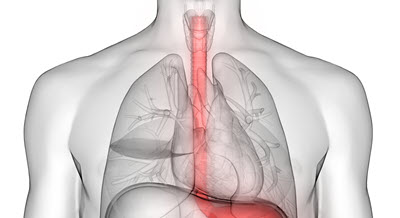
Esophageal cancer is cancer found in the esophagus—the hollow, muscular tube in your body that carries food and liquid from the throat to the stomach.
ESOPHAGEAL CANCER RISK FACTORS
Although a rare condition, esophageal cancer has an average five-year survival rate of approximately 20%.
Risk factors for developing esophageal cancer include the following:
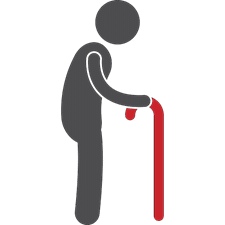
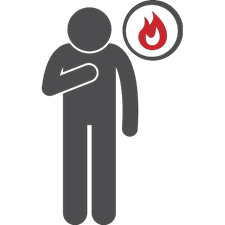
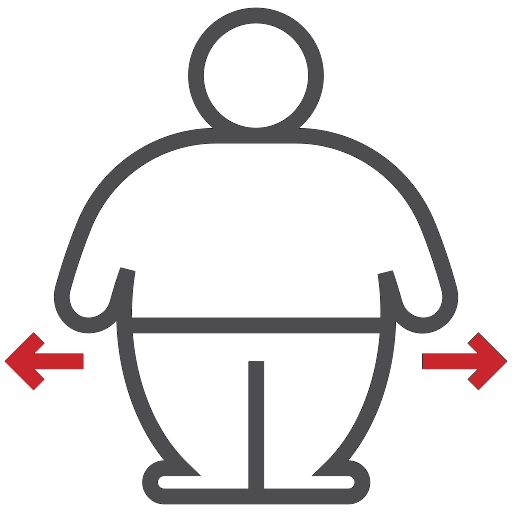
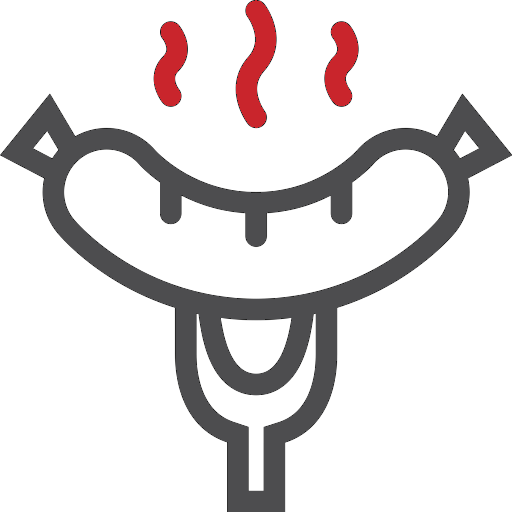


If you’re experiencing heartburn that’s severe or frequent, it’s important you talk with your doctor. The longer it continues, it can damage the inner lining of the esophagus, leading to a condition called Barrett’s esophagus, which increases your risk of esophageal cancer.
Find help to stop smoking and support to reduce alcohol consumption.
Learn more about other risk factors, including how men are three times as likely as women to suffer from esophageal cancer.
MOST COMMON TYPES OF ESOPHAGEAL CANCER
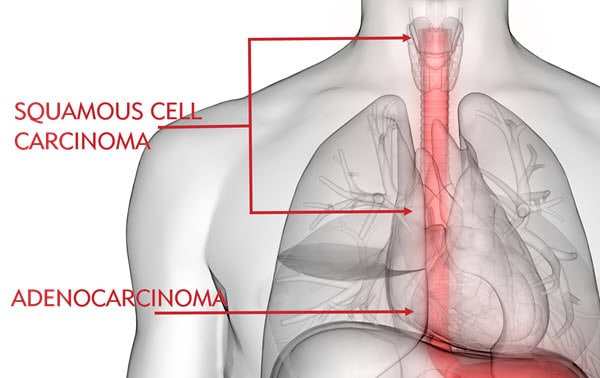
Esophageal cancer is most common in two forms: squamous cell carcinoma and adenocarcinoma. Squamous cell carcinoma typically affects the upper and middle esophagus, whereas adenocarcinoma is commonly found in the lower esophagus near the stomach and is believed to be related to stomach acid exposure. Learn about other forms of esophageal cancer.
Adenocarcinoma is the most common type of esophageal cancer among Caucasian people, whereas squamous cell carcinoma is more common among African Americans. In comparison, American Indian/Alaska Natives, Hispanics, and Asians/Pacific Islanders have lower rates of esophageal cancer, respectively.
SIGNS & SYMPTOMS

Esophageal cancer can be difficult to treat because individuals don’t usually experience symptoms until the disease is advanced. Esophageal cancer usually doesn’t cause symptoms in its early stages.
As it progresses, symptoms can include:
- Difficulty swallowing, can be painful
- Hoarse voice
- Indigestion or heartburn
- Weight loss
- Persistent cough
- Vomiting
Some risk factors for esophageal cancer can’t be avoided, such as genetics or age. However, there are many lifestyle changes that can help you reduce your risk, such as avoiding tobacco and treating acid reflux:
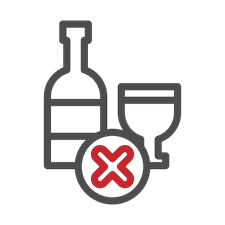
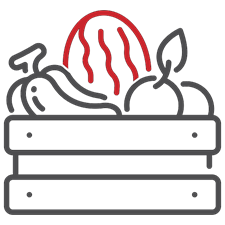


DIAGNOSIS & TREATMENT

If you’ve been diagnosed with esophageal cancer, you most likely have many questions. You also have multiple treatment options. Your cancer care team will discuss each with you, helping you make the best decision for you.
Learn more about esophageal cancer diagnosis, treatment, and life after treatment or visit the Esophageal Cancer Action Network (ECAN) for a free patient guide.
MORE RESOURCES
- American Association for Cancer Research
- American Cancer Society
- Cancer Care
- Cancer Support Community
- Esophageal Cancer Awareness Association
- ECAN
- National Cancer Institute
- National Foundation for Cancer Research
RELATED PRODUCTS
Recognizing Lung Cancer Awareness Month
November is Lung Cancer Awareness Month, an important time for us at Merit Medical. As a patient-centric healthcare company, it is our goal to not only provide the tools physicians need to treat and improve outcomes for lung cancer patients but also to share knowledge and increase awareness surrounding the disease.
WHAT IS LUNG CANCER?
Lung cancer is a type of cancer that begins in the lungs. It is the leading cause of cancer deaths worldwide.1 Among women in the US, it has surpassed breast cancer, becoming the leading cause of cancer deaths nationally.2
There are different kinds of lung cancer, but the two main types are non-small cell lung cancer (NSCLC) and small cell lung cancer (SCLC).3
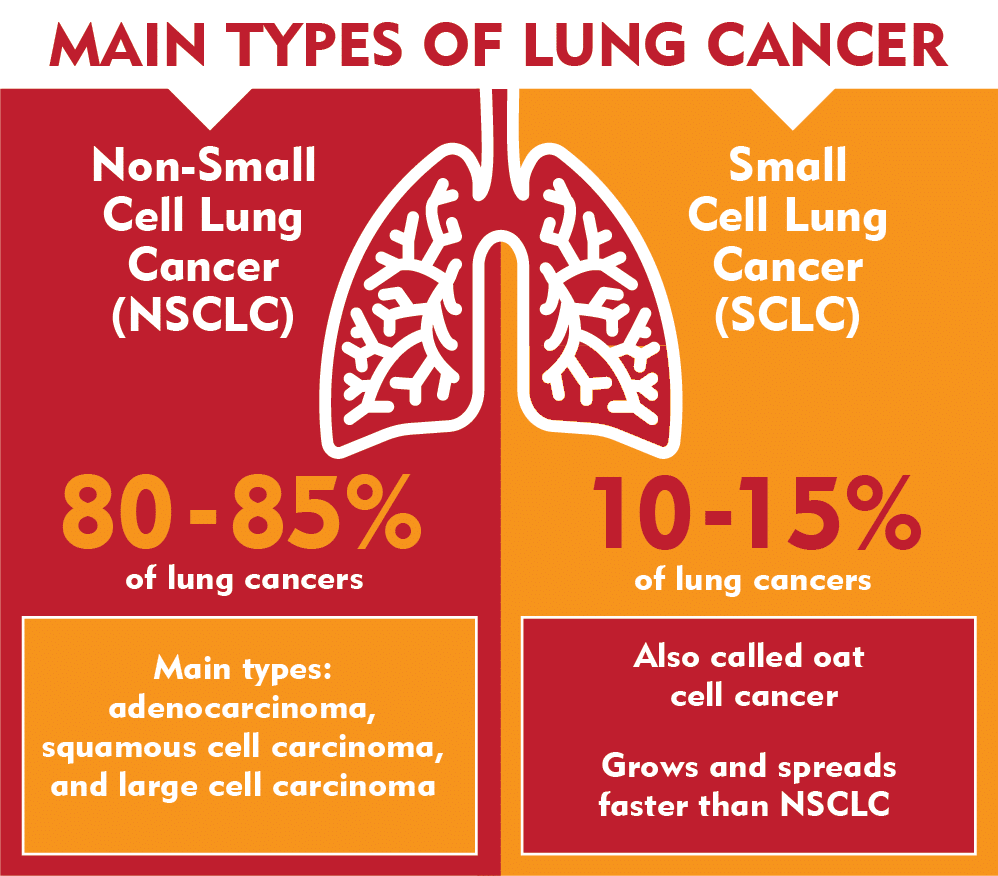
Learn more about NSCLC, SCLC, and other types of lung tumors here.
WHAT CAUSES LUNG CANCER?
It is unknown what causes every case of lung cancer, but there are known risk factors.
SMOKING4

Smoking is the leading cause of lung cancer, resulting in about 80% of lung cancer deaths. Although smoking is the strongest risk factor, it can also interact with other factors or not be the cause at all.
CAUSES IN NON-SMOKERS1,4

Many people who develop lung cancer are smokers or former smokers, whereas others have never smoked at all. Lung cancer in non-smokers can be caused by exposure to different substances, such as radon, secondhand smoke, air pollution, asbestos, diesel exhaust, and other chemicals. People with a family history of lung cancer are also at an increased risk.
A small percentage of people develop lung cancer who have no known risk factors. This may happen with no outside cause or may be due to factors we have not found yet.
Learn more about lung cancer risk factors as well as gene changes that may lead to the disease.
SYMPTOMS OF LUNG CANCER
In the early stages, lung cancer typically does not cause any signs and symptoms. In the advanced stages, common signs and symptoms of lung cancer can include:
- A new, persistent cough
- New onset of wheezing
- Coughing up blood or rust-colored phlegm
- Shortness of breath
- Chest pain, especially when breathing deeply, laughing, or coughing
- Hoarse voice
- Weight loss without trying
- Loss of appetite
- Fatigue
- Fluid in the chest
- Persistent infections, such as bronchitis and pneumonia
- Cancer spreading to other parts of the body (This can cause other signs and symptoms, such as headache, nausea, pain, etc., depending on which organ is affected.)



LUNG CANCER PREVENTION
Although lung cancer cannot always be avoided, steps can be taken to reduce your risk1.

Quit Smoking (or Don’t Start)
If you have never smoked, don’t start. If you want to quit, there are many replacement products, support programs, and medications available to help. Talk to your doctor.
Stay Away from Secondhand Smoke
Avoid places where people smoke. If you live with a smoker, encourage him or her to quit and ask that smoking be done outside.
Test Your Home for Radon
IIf you learn that you have high radon levels in your home, it can be corrected. Contact your local department of public health for more information.
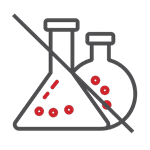
Avoid Cancer-Causing Chemicals
Always follow precautions in the workplace to avoid toxic chemical exposure. If you work regularly in a hazardous environment, talk with your doctor to see what else you can do to protect yourself.

Live a Healthy Lifestyle
Choose a diet full of fruits and vegetables. Always choose nutritious foods versus taking large doses of vitamins, as some vitamins have been found to increase the risk of lung cancer.6 Include physical activity in your routine. Find a type of exercise you enjoy and try to be active most days of the week.
WHEN TO SEE A DOCTOR

If you notice any signs or symptoms that worry you, make an appointment with your doctor. If you need help quitting, your doctor can create a care plan that may include medication, counseling, support groups, online resources, and replacement products.
Only 16% of lung cancer cases are diagnosed at an early stage, and more than half of people with lung cancer die within one year of diagnosis.2 If you are at an increased risk of lung cancer, talk to your doctor about lung cancer screening options. Early detection can make a difference. The five-year survival rate for lung cancer is 56% for cases detected when the disease is still localized within the lungs.2 However, these rates decrease dramatically to only 5% when tumors have spread to other organs.2
At Merit, our goal is to help people worldwide live their best lives. Learn about the trusted interventional and palliative treatment alternatives we offer.
RELATED PRODUCTS
References
- Mayo Clinic. “Lung Cancer Symptoms and Causes.” Accessed October 23, 2020. https://www.mayoclinic.org/diseases-conditions/lung-cancer/symptoms-causes/syc-20374620
- American Lung Cancer Association. “Lung Cancer Fact Sheet.” Accessed October 27, 2020. https://www.lung.org/lung-health-diseases/lung-disease-lookup/lung-cancer/resource-library/lung-cancer-fact-sheet
- American Cancer Society. “What Is Lung Cancer?” Accessed October 23, 2020. https://www.cancer.org/cancer/lung-cancer/about/what-is.html
- American Cancer Society. “What Causes Lung Cancer?” Accessed October 23, 2020. https://www.cancer.org/cancer/lung-cancer/causes-risks-prevention/what-causes.html
- American Cancer Society. “Signs and Symptoms of Lung Cancer.” Accessed October 23, 2020. https://www.cancer.org/cancer/lung-cancer/detection-diagnosis-staging/signs-symptoms.html
- Mayo Clinic. “Drugs and Supplements Beta Carotene (Oral Route). Accessed October 23, 2020. https://www.mayoclinic.org/drugs-supplements/beta-carotene-oral-route/precautions/drg-20066795
AEROmini® Now Offers Smallest Self-Expanding Nitinol Stents with Through-the-Scope Options

Merit Medical is committed to finding new ways to approach challenging procedures. We accomplish this by transforming customer needs into innovative products that improve the lives of patients. Applying this approach, our Merit Medical Endotek® team—a division committed to next-generation, non-vascular stent technology—sought out valuable physician feedback and used it to develop new and improved AEROmini Tracheobronchial Stents. This exciting line extension offers the smallest self-expanding nitinol stents on the market. With both through-the-scope and over-the-wire deployment options, interventional pulmonologists and surgeons can reach small, distal airways deep within the lung that were previously considered untreatable.
AEROmini Tracheobronchial Stents are indicated for use in the treatment of tracheobronchial strictures produced by malignant neoplasms. Now with through-the-scope capabilities, physicians can deploy AEROmini stents through a 2.8 mm or larger working channel of a therapeutic bronchoscope with direct visualization of the affected area without the need for fluoroscopy. The new through-the-scope AEROmini stents are available in 6-mm diameter and 10-mm and 15-mm lengths, allowing physicians to reach tortuous distal airways with control and precision.
In addition to through-the-scope deployment, the new AEROmini line extension offers smaller, over-the-wire stents specifically designed for physicians treating patients with shorter strictures or those who insist on accurate stent placement without occluding adjacent airways. Available in 8-mm through 14-mm diameters and a 10-mm length, over-the-wire AEROmini stents expand the options for difficult strictures.


Customers can expect the same trusted features and benefits from the new line extension as they have from original AERO® and AEROmini stents. For example, the AERO technology has virtually no foreshortening or elongation of the stents. All stents are fully covered and hydrophilically coated to prevent ingrowth and mucus plugging. Proprietary anti-migration struts decrease stent migration without the potential complications associated with tissue ingrowth. In addition, the through-the-scope suture knot and over-the-wire purse string design aid in stent repositioning and removal.
For over a decade, Merit Medical Endotek has been committed to innovating for the pulmonary space. By listening to our customers, we consistently dedicate our internal research and development team to delivering innovative products that expand treatment options available to physicians and that can ultimately lead to better patient outcomes. With the new AEROmini line extension, we have kept this promise, designing cutting-edge technology that improves the lives of patients.
Visit the AEROmini product page to explore its many features and advantages, and see the through-the-scope AEROmini stent in action.

